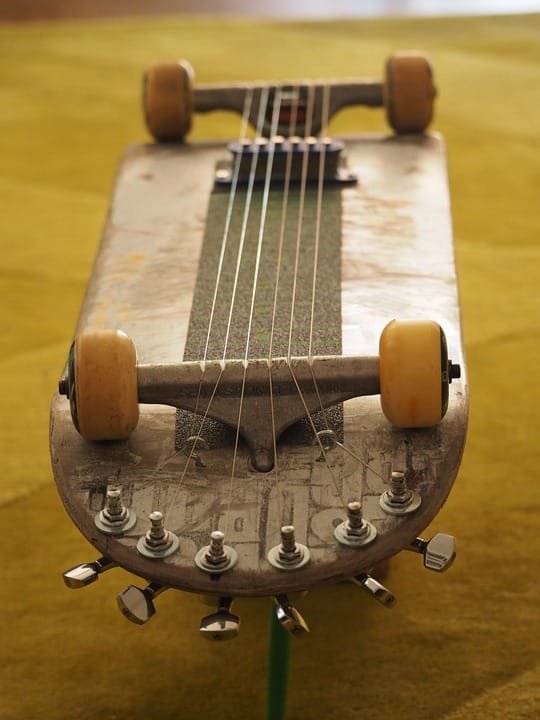How This Eco-Friendly Fashion Label Is Revolutionizing the Way We Think About Junk Food Fashion
The Wake-Up Call: Fashion’s Environmental Impact
As I walked into the crowded streets of New York City, I couldn’t help but notice the sea of fast fashion that swirled around me. Fancy logos, bright colors, and trendy designs danced in my eyes, but beneath the surface, I sensed a silent efficiency. A fashion industry that fuels over 2% of global greenhouse gas emissions, produces 12.8% of municipal solid waste, and employs millions of workers, mostly in developing countries (1)<sup sdfzhd<.
It was time for a change. I embarked on a journey into sustainable fashion, and it’s been a game-changer.
The First Steps: Understanding Sustainable Fashion
Sustainable fashion is not just about swapping faux suede for real leather or choosing select organic cotton over conventional. It’s a deeper commitment to eco-friendly practices throughout the entire production process, from seed to shelf. It’s about adopting a "circular" approach, where clothes are designed to be worn, repaired, and repurposed, rather than discarded.
Did you know? The average American generates about 82 pounds of textile waste per year, with 85% of it ending up in landfills (2)? Time to rethink our relationship with clothing.
The Benefits: Slow Fashion, Upcycling, and Eco-Friendly Materials
Slow fashion is about embracing quality over quantity. Instead of fast fashion’s "toss and go" culture, slow fashion encourages us to invest in timeless pieces, made from sustainable materials, that can be repaired, refashioned, and repurposed.
Some of the most eco-friendly materials include:
- Recycled polyester: Made from post-consumer plastic waste, it’s a game-changer for reducing microplastics in our oceans.
- Bamboo: This renewable resource is strong, lightweight, and requires minimal water and pesticides.
- Hemp: With its natural resistance to pests and diseases, hemp farming uses less water and pesticides, making it a more sustainable crop.
Breaking the Mold: Innovative Brands Leading the Charge
- H&M Conscious: Their Kattack collection uses recycled plastic from ocean waste to create stunning pieces.
- Patagonia: Pioneering environmental responsibility since the 1970s, they now offer products made from recycled materials, like repurposed sailing jackets.
- Reformation: This AI-powered fashion brand reduces their carbon footprint by producing only when needed, using sustainable materials, and promoting second-hand shopping.
Tips for the Sustainably Savy: How to Make a Change
- Buy secondhand first: Thrift shopping, consignment stores, or online marketplaces like ThredUp and eBay.
- Invest in timeless pieces: Prioritize quality, neutral colors, and classic designs.
- Learn to repair and repurpose: Watch YouTube tutorials, join online sewing communities, or take a DIY class.
- Donate or recycle: Give gently used clothes a new life or dispose of them responsibly.
Conclusion: The Future of Fashion is Sustainable
As I look back on my journey, I realize that sustainable fashion isn’t just about saving the planet; it’s about self-expression, individuality, and contributing to a more compassionate world. By adopting eco-friendly practices, we can transform not just our closets but our collective future.
Frequently Asked Questions
- What is fast fashion?
Fast fashion is a global attire industry that focuses on producing cheap, trendy pieces quickly to meet growing consumer demand. This leads to a culture of disposability, resulting in millions of tons of textile waste annually. - What is the environmental impact of fashion?
The fashion industry is responsible for approximately 2.1 billion tons of CO2 emissions, 12.8% of municipal solid waste, and 20% of global water pollution. - How can I start making sustainable fashion choices?
Start by researching eco-friendly brands, thrift shopping, and DIY clothing projects. Prioritize quality over quantity, and learn to repair and repurpose your clothes.
Ready to join the sustainable fashion revolution? Take the first step today and discover a world where fashion meets compassion.
References:
(1) "Fashion’s Role in the Circular Economy" by Ellen MacArthur Foundation and the Global Fashion Agenda
(2) "Clothing, Waste, and the Environment" by The Ellen MacArthur Foundation
Optimized keywords: Sustainable fashion, eco-friendly, slow fashion, upcycling, circular economy, environmental impact, social responsibility, fashion industry, second-hand shopping, DIY clothing, repurposing, climate change, pollution, waste management, sustainable living, self-expression, individuality.








Leave a Reply